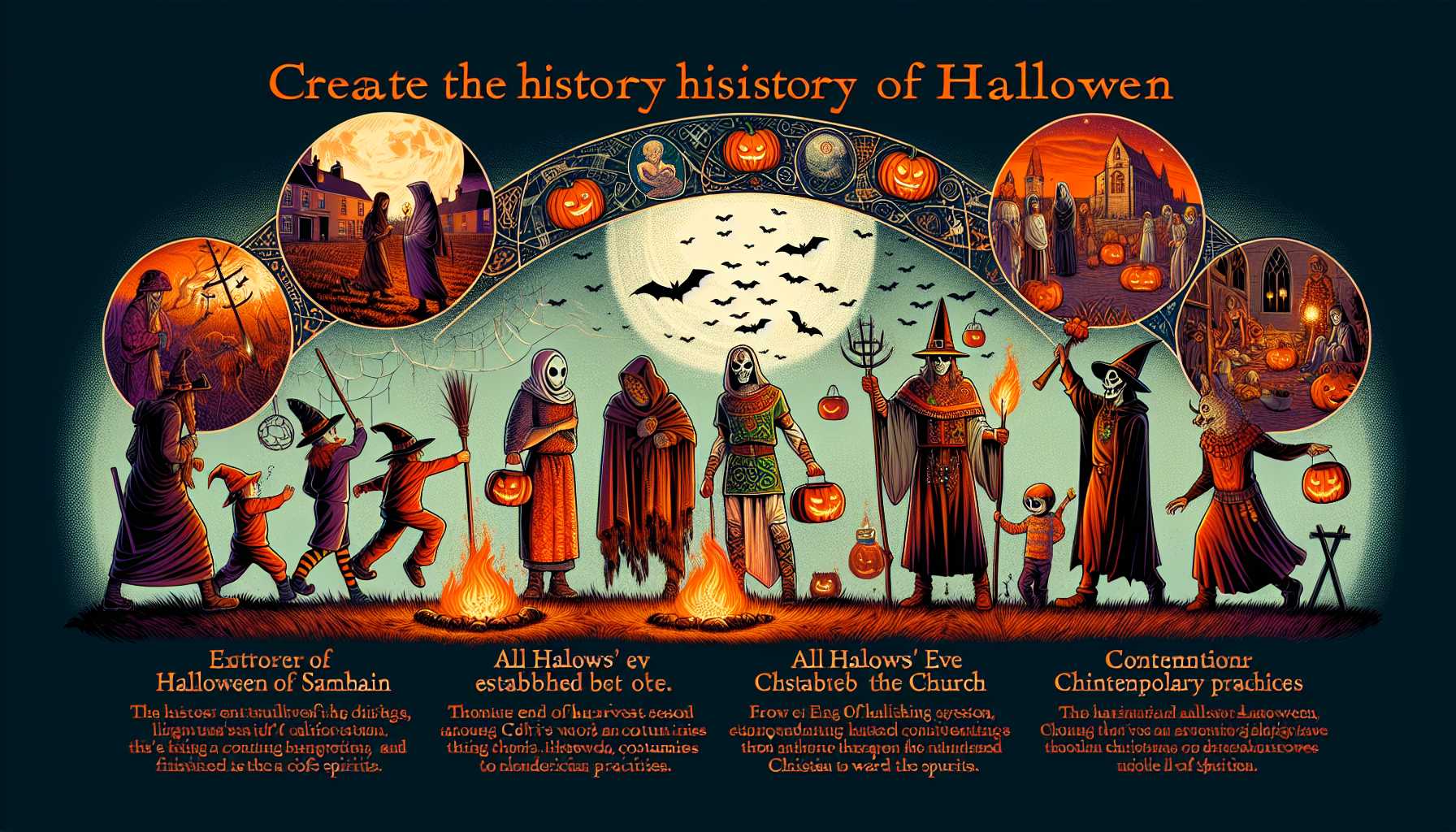
The Evolution of Halloween From Ancient Samhain to Modern Celebration
The article on the history of Halloween outlines the holiday's origins, tracing it back to the ancient Celtic festival of Samhain, celebrated around November 1st.
Guānyú wànshèngjié lìshǐ de wénzhāng gàishùle jiérì de qǐyuán, zhuīsù dào gǔlǎo de kǎi'ěrtè jiérì Sàwēnjié, gāi jiérì dàyuē zài 11 yuè 1 rì qìngzhù.
关于万圣节历史的文章概述了节日的起源,追溯到古老的凯尔特节日萨温节,该节日大约在11月1日庆祝。
Samhain marked the end of the harvest season and the onset of winter, a time believed to blur the line between the living and the dead.
Sàwēnjié biāozhìzhe fēngshōu jìjié de jiéshù yǐjí dōngjì de kāishǐ, zhège shíhòu bèi rènwéi shì shēngzhě yǔ sǐzhě zhī jièxiàn móhú de shíkè.
萨温节标志着丰收季节的结束以及冬季的开始,这个时候被认为是生者与死者之间界限模糊的时刻。
Celts lit bonfires and wore costumes to ward off roaming spirits, as they believed the souls of the deceased returned on this night.
Kǎi'ěrtè rén diǎnrán gōuhuǒ, chuān shàng costumes lái qūgǎn yóudàng de línghún, yīnwèi tāmen xiāngxìn sǐzhě de línghún huì zài zhège yèwǎn huílái.
凯尔特人点燃篝火,穿上 costumes 来驱赶游荡的灵魂,因为他们相信死者的灵魂会在这个夜晚回来。
With the spread of Christianity, the church established All Hallows' Eve on October 31st, the night before All Saints' Day, to replace pagan customs with Christian practices.
Suízhe jīdūjiào de chuánbō, jiàohuì zài 10 yuè 31 rì shèlìle wànshèngjié qiánxī, wànshèngjié de qián yītiān, yǐ yòng jīdūjiào de zuòfǎ qǔdài yìjiào de xí sú.
随着基督教的传播,教会在10月31日设立了万圣节前夕,万圣节的前一天,以用基督教的做法取代异教的习俗。
Over centuries, this celebration evolved into what we now know as Halloween, incorporating various cultural elements.
Jīngguò shù bǎi nián, zhège qìngzhù huódòng yǎnbiàn chéng wǒmen xiànzài suǒ chēng de wànshèngjié, rónghéle gèzhǒng wénhuà yuánsù.
经过数百年,这个庆祝活动演变成我们现在所称的万圣节,融合了各种文化元素。
By the 19th century, Irish immigrants brought the tradition to America, where it became increasingly popular and commercialized.
Dào 19 shìjì, ài'ěrlán yímín jiāng zhè yī chuántǒng dài dào Měiguó, zài nàlǐ tā biàn dé yuè lái yuè shòu huānyíng bìng shāngyèhuà.
到19世纪,爱尔兰移民将这一传统带到美国,在那里它变得越来越受欢迎并商业化。
Today, Halloween is characterized by costumes, trick-or-treating, and festive decorations, diverging from its somber origins to a more playful and community-centered celebration.
Jīntiān de wànshèngjié yǐ costumes, trick-or-treating hé jiérì zhuāngshì wéi tèzhēng, cóng qí yánsù de qǐyuán zhuǎnbiàn wéi gèng jù yúlè xìng hé shèqū zhōngxīn de qìngzhù huódòng.
今天的万圣节以 costumes、 trick-or-treating 和节日装饰为特征,从其严肃的起源转变为更具娱乐性和社区中心的庆祝活动。
The article emphasizes the transformation of Halloween through cultural exchanges and its evolution into a widely celebrated holiday that combines elements of ancient rituals and modern festivities.
Wénzhāng qiángdiào wànshèngjié tōngguò wénhuà jiāoliú de zhuǎnbiàn jí qí yǎnbiàn chéng yī zhǒng guǎngfàn qìngzhù de jiérì, jiéhéle gǔdài yíshì hé xiàndài qìngdiǎn de yuánsù.
文章强调万圣节通过文化交流的转变及其演变成一种广泛庆祝的节日,结合了古代仪式和现代庆典的元素。
Based on this article
